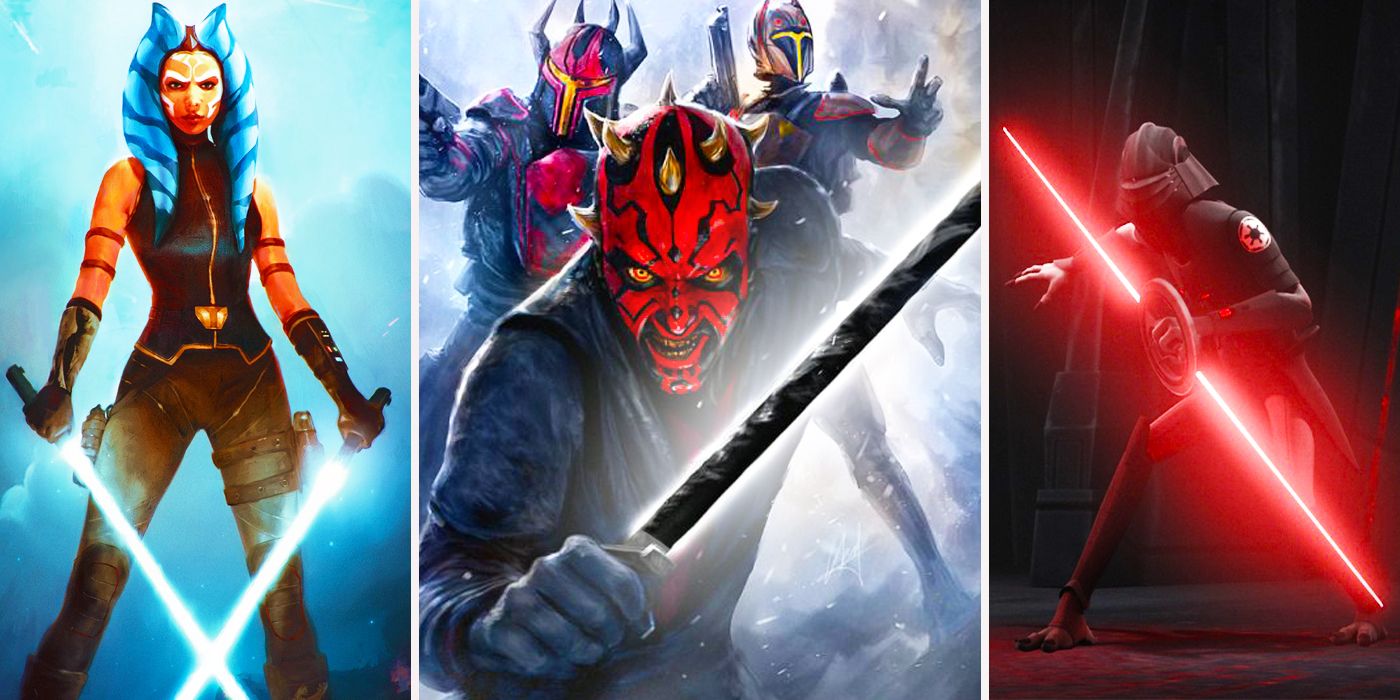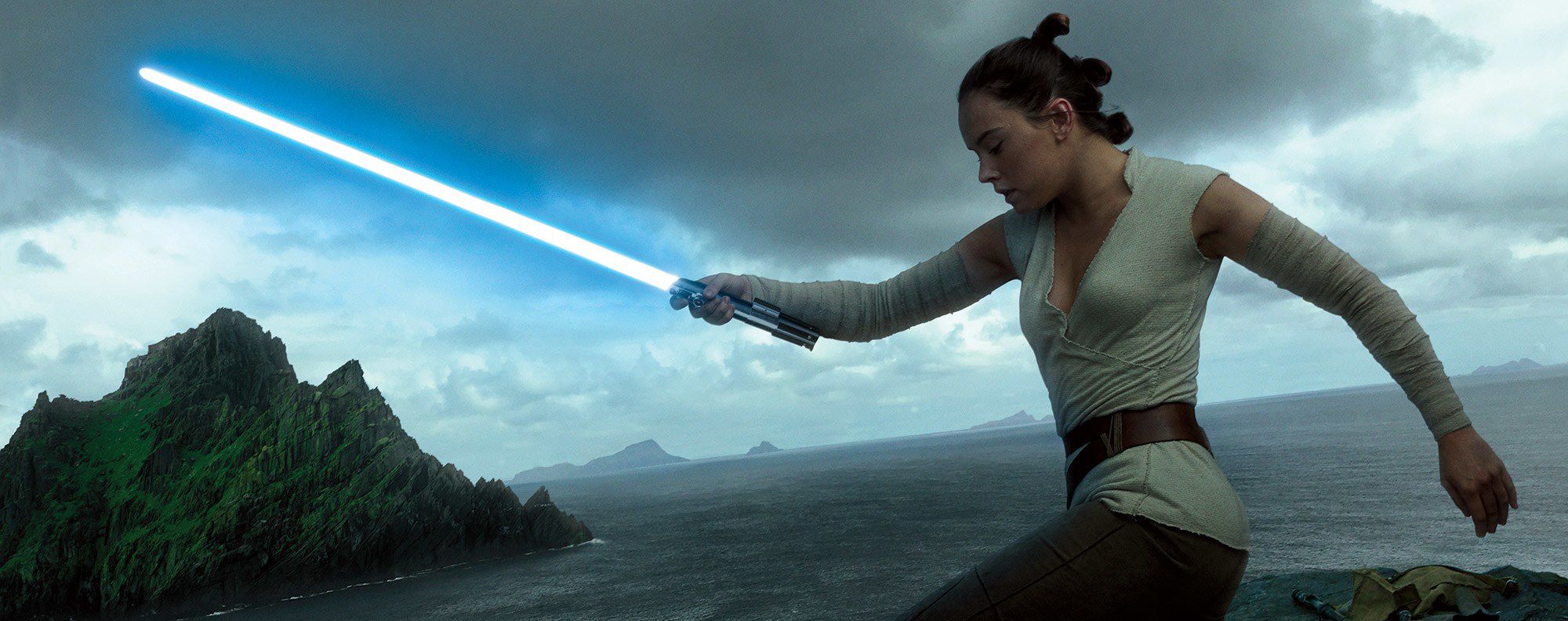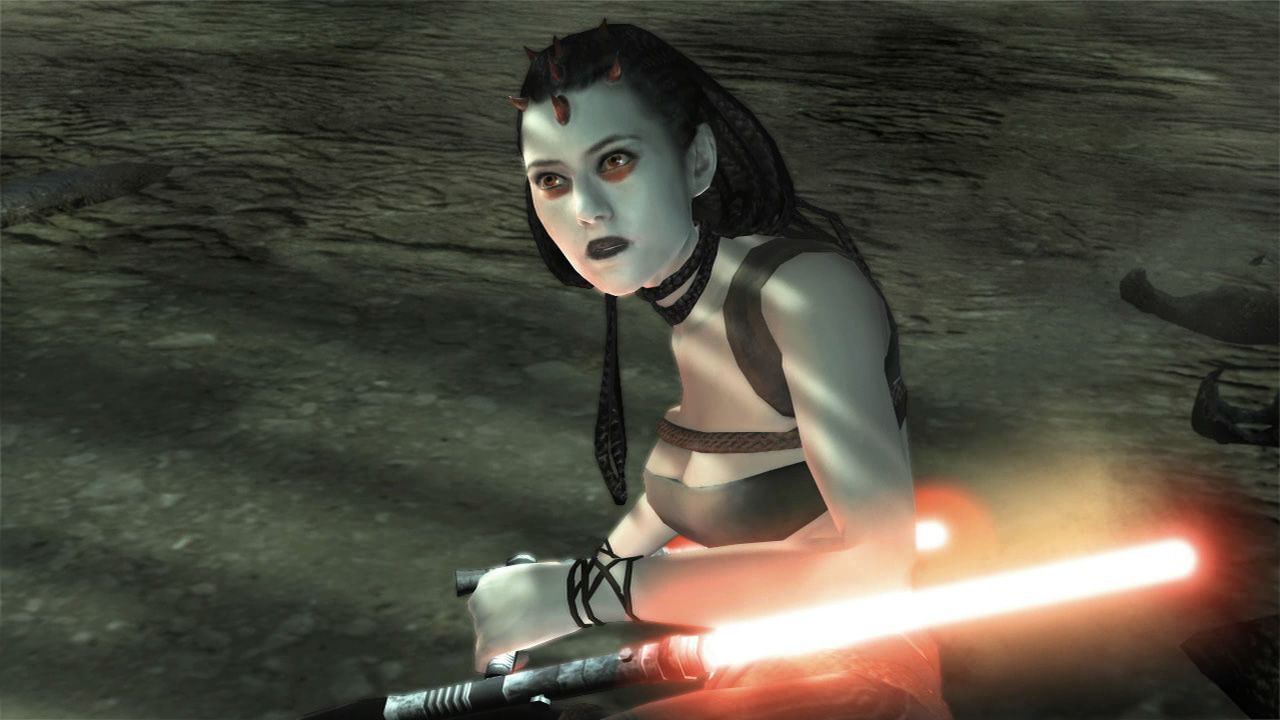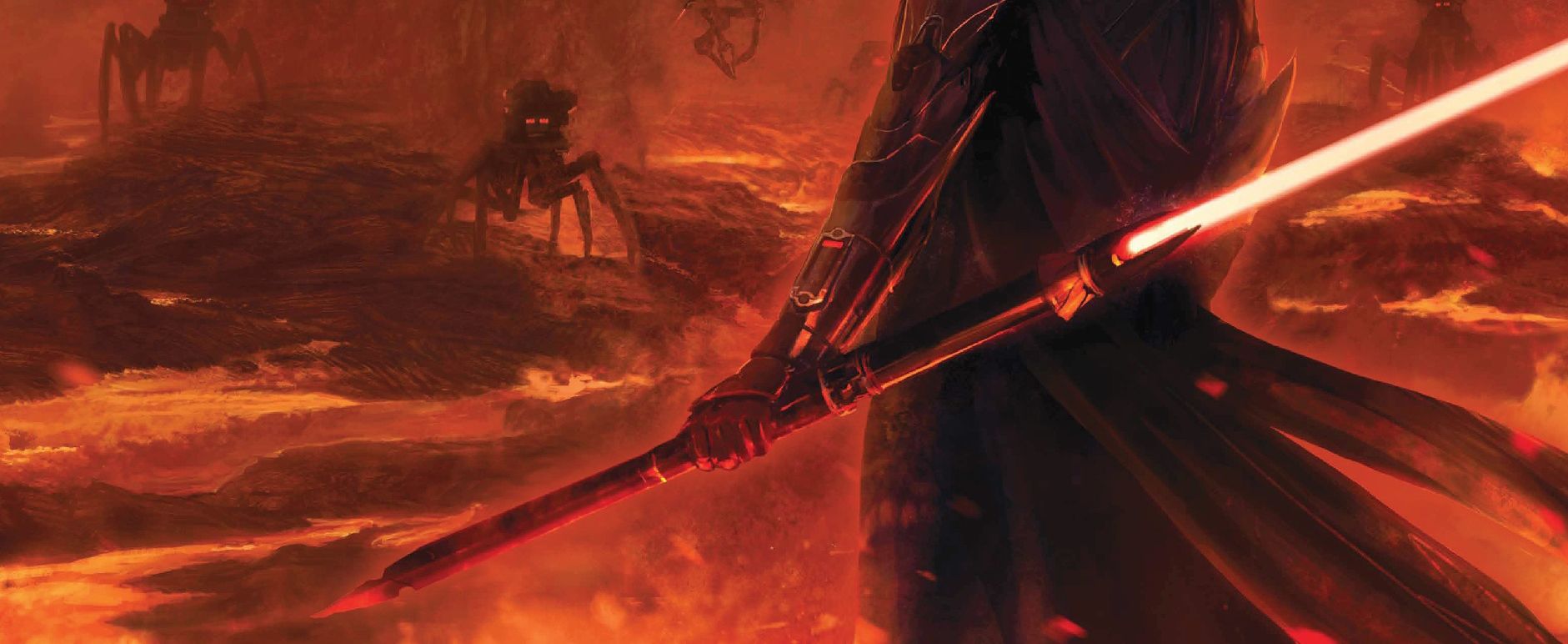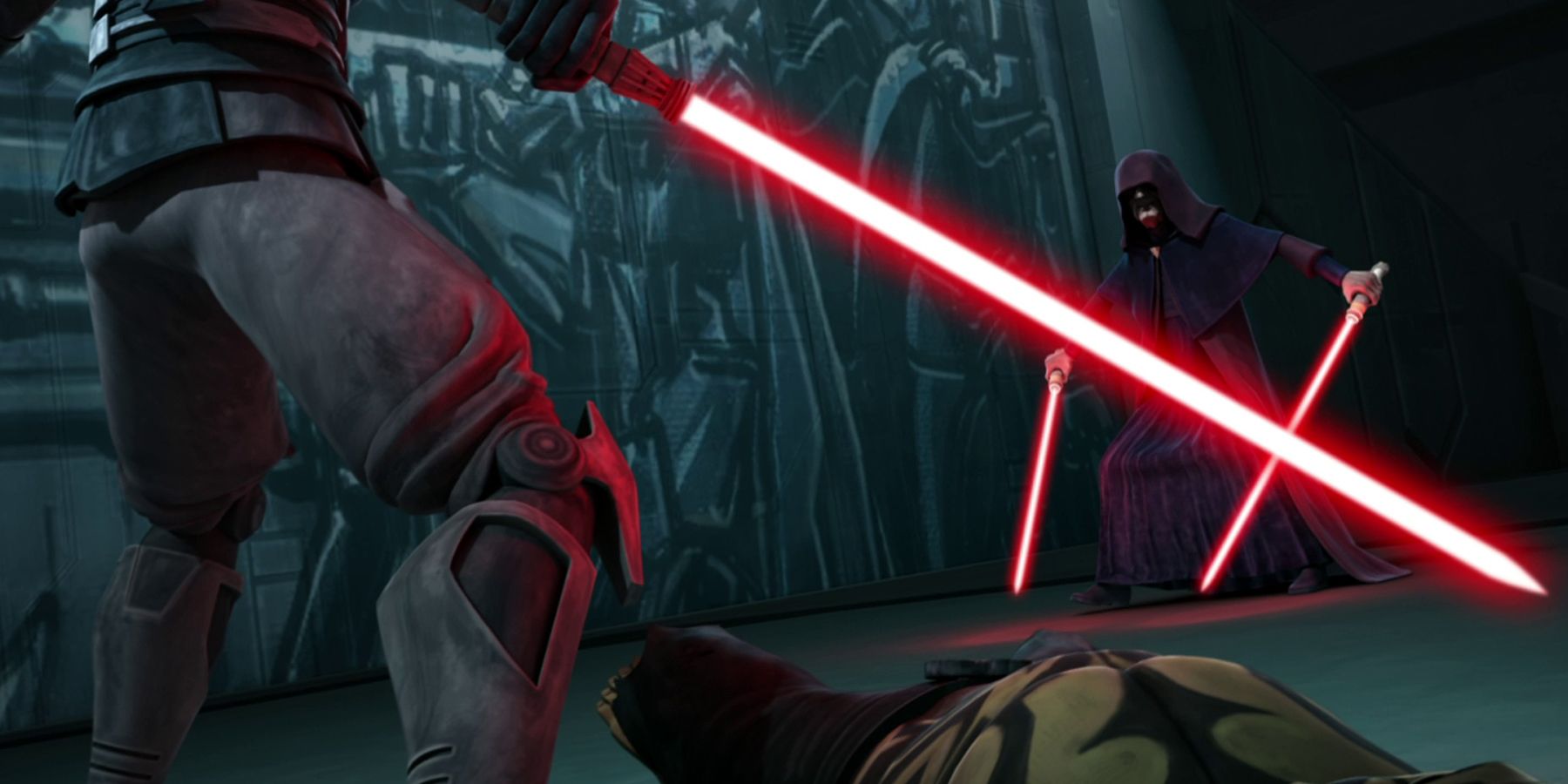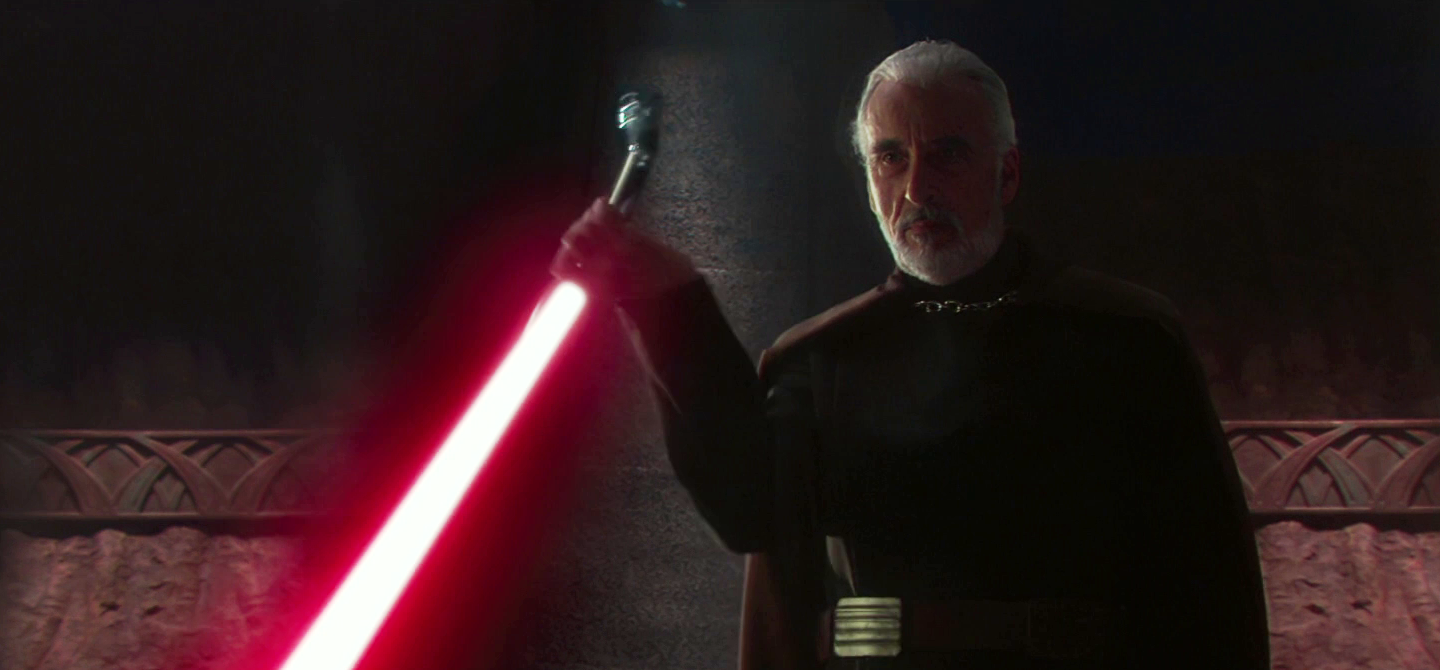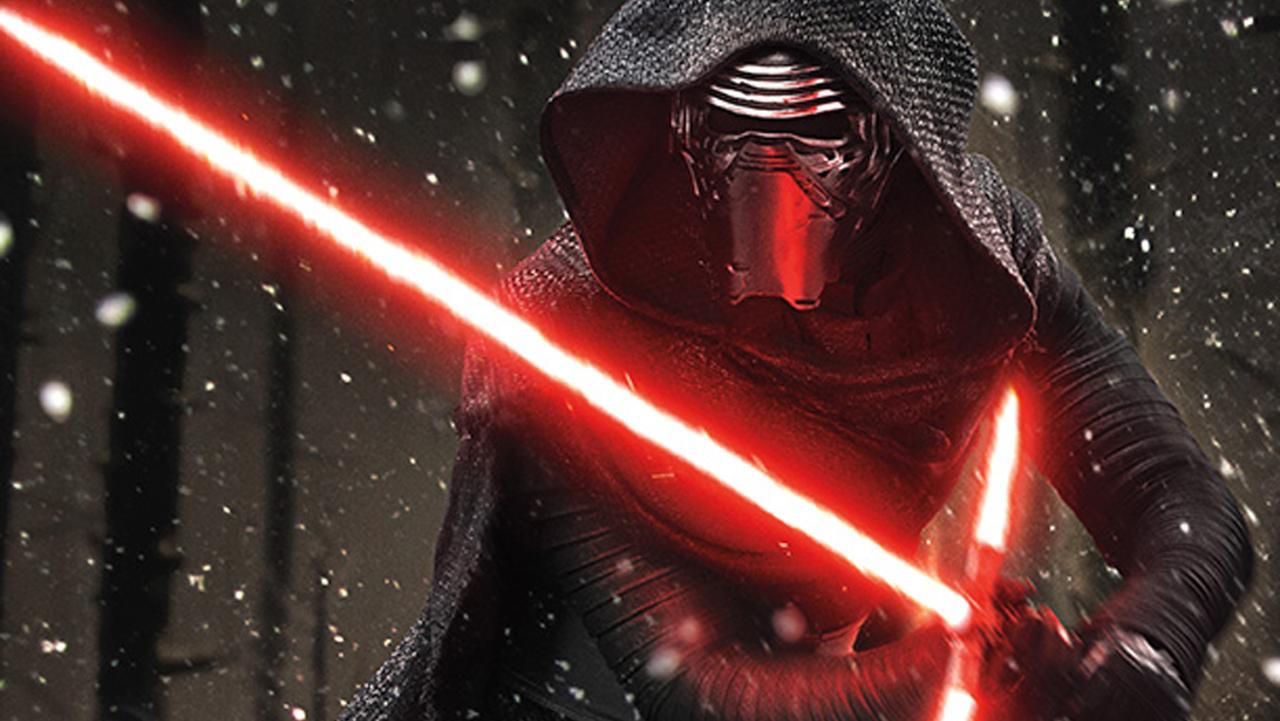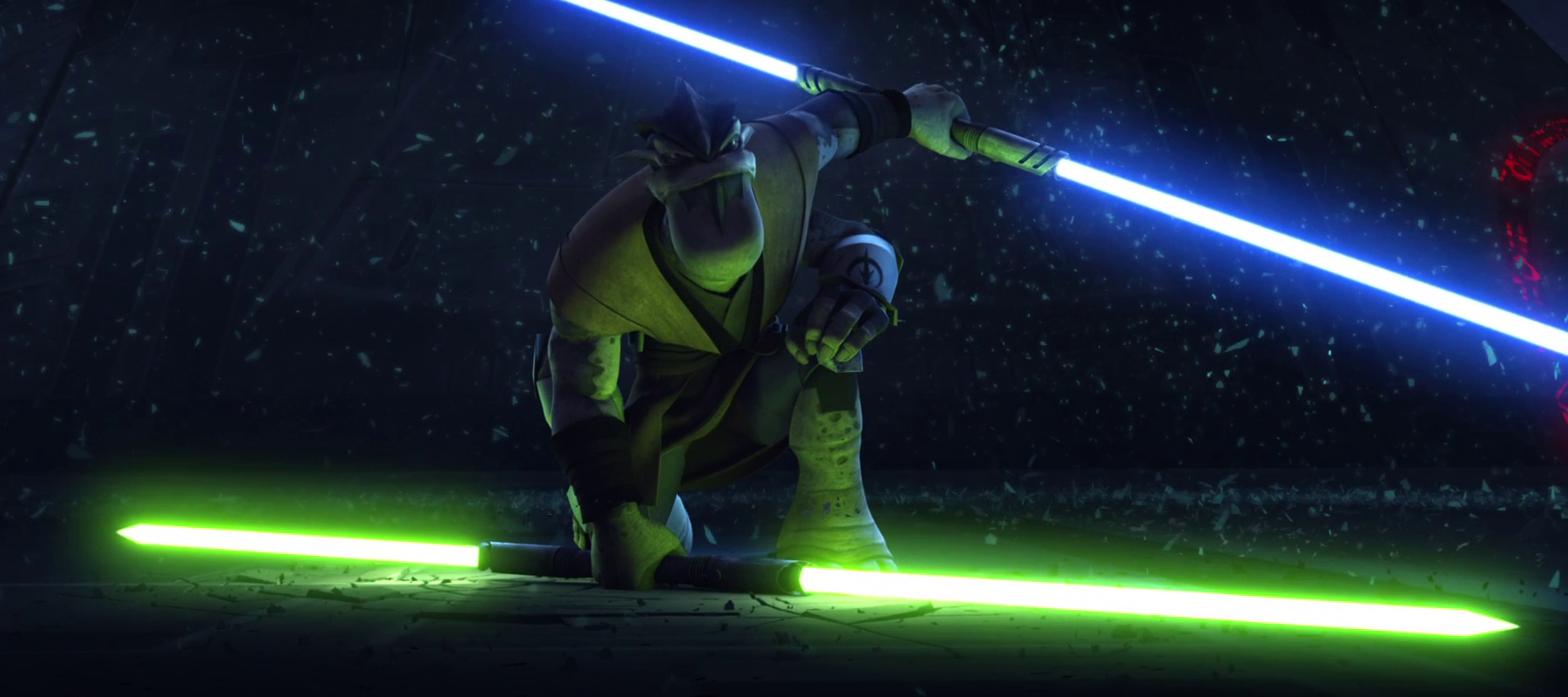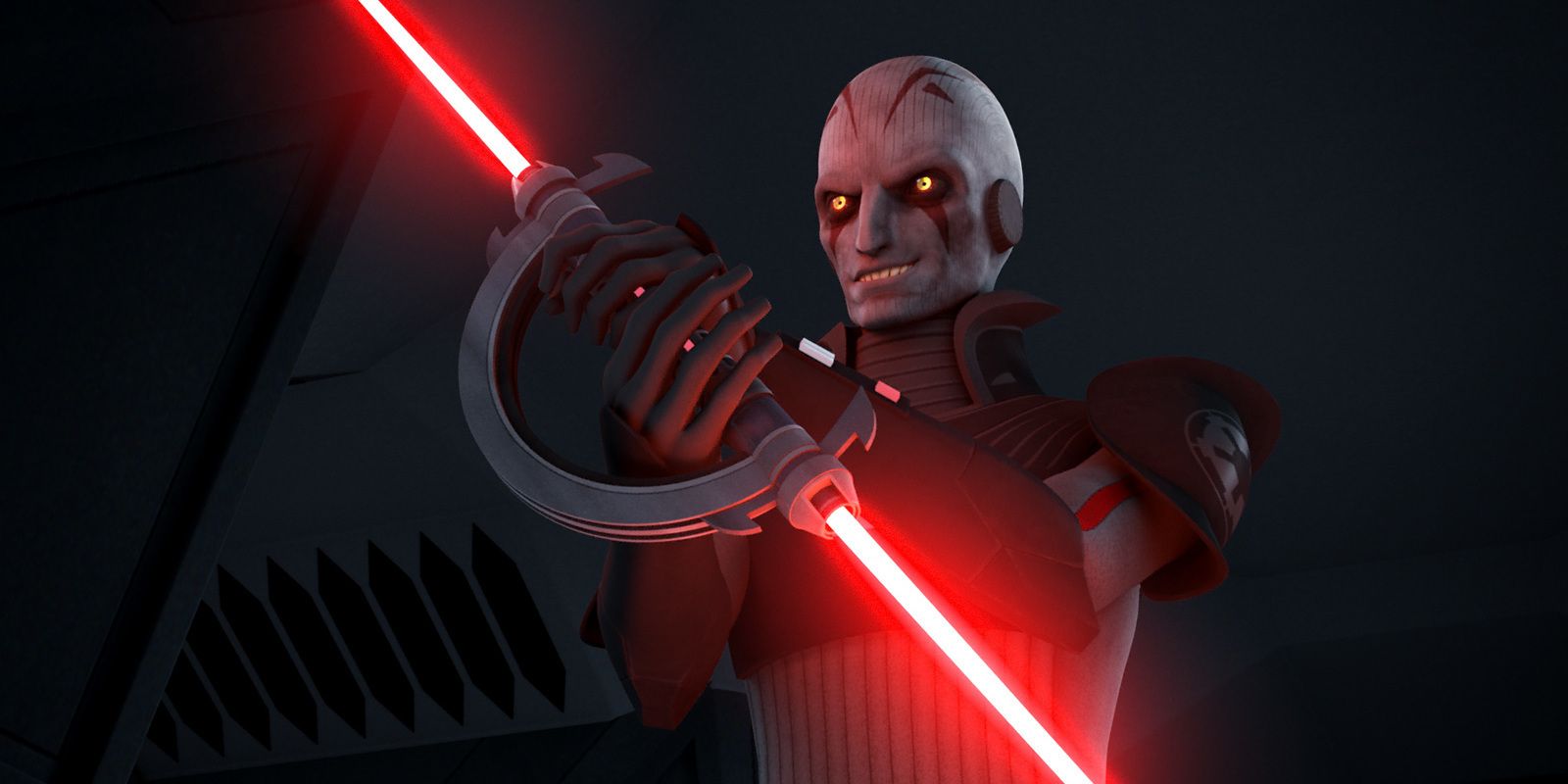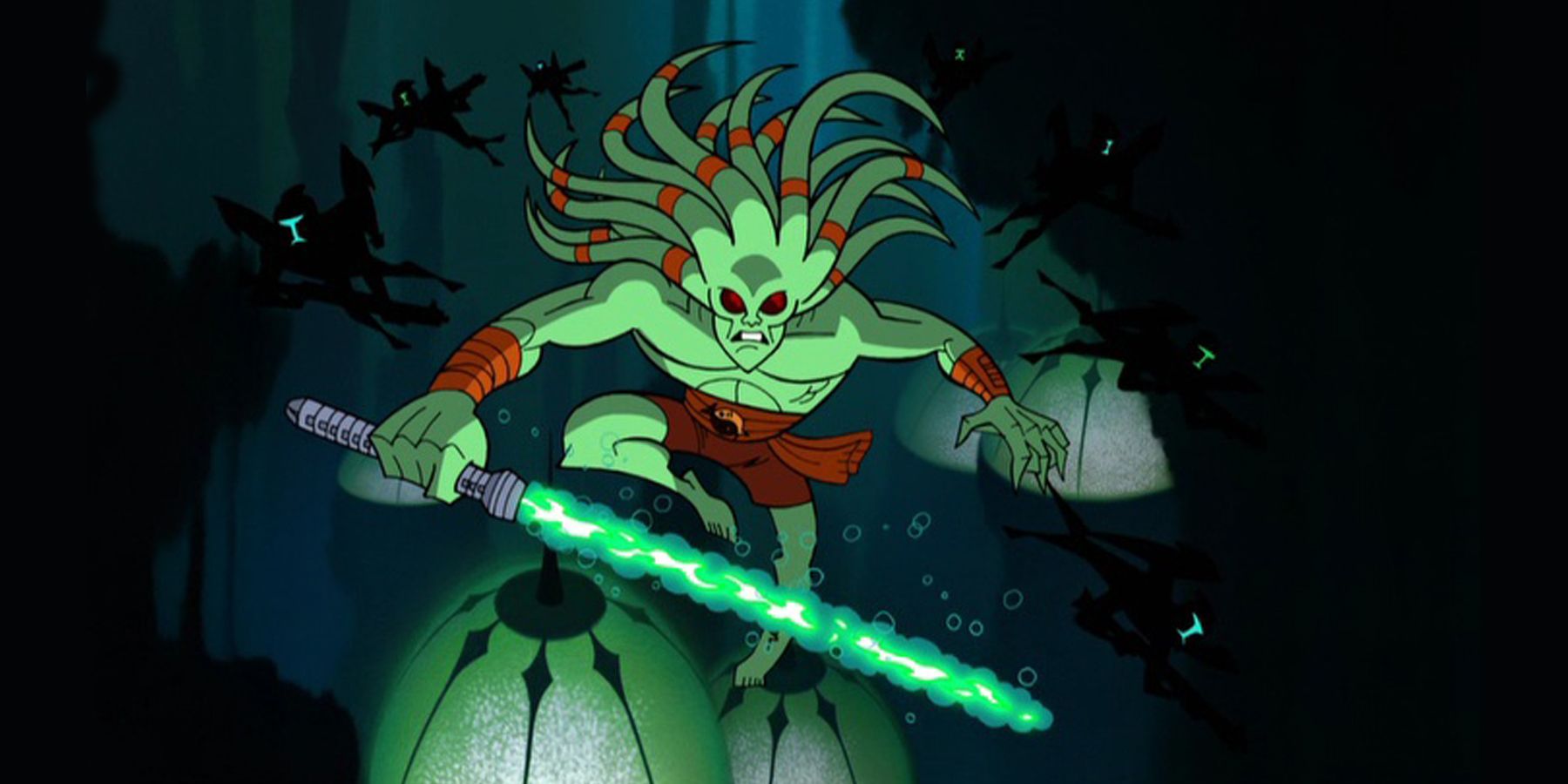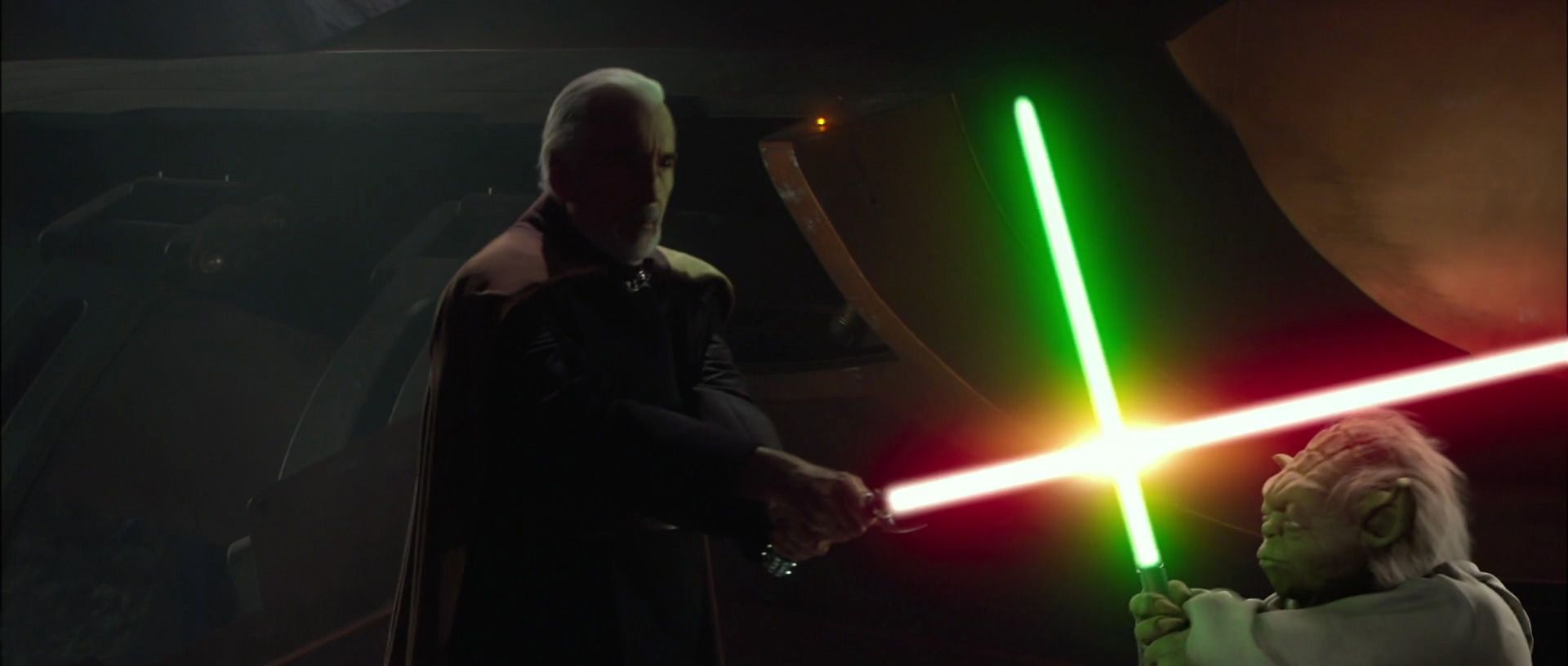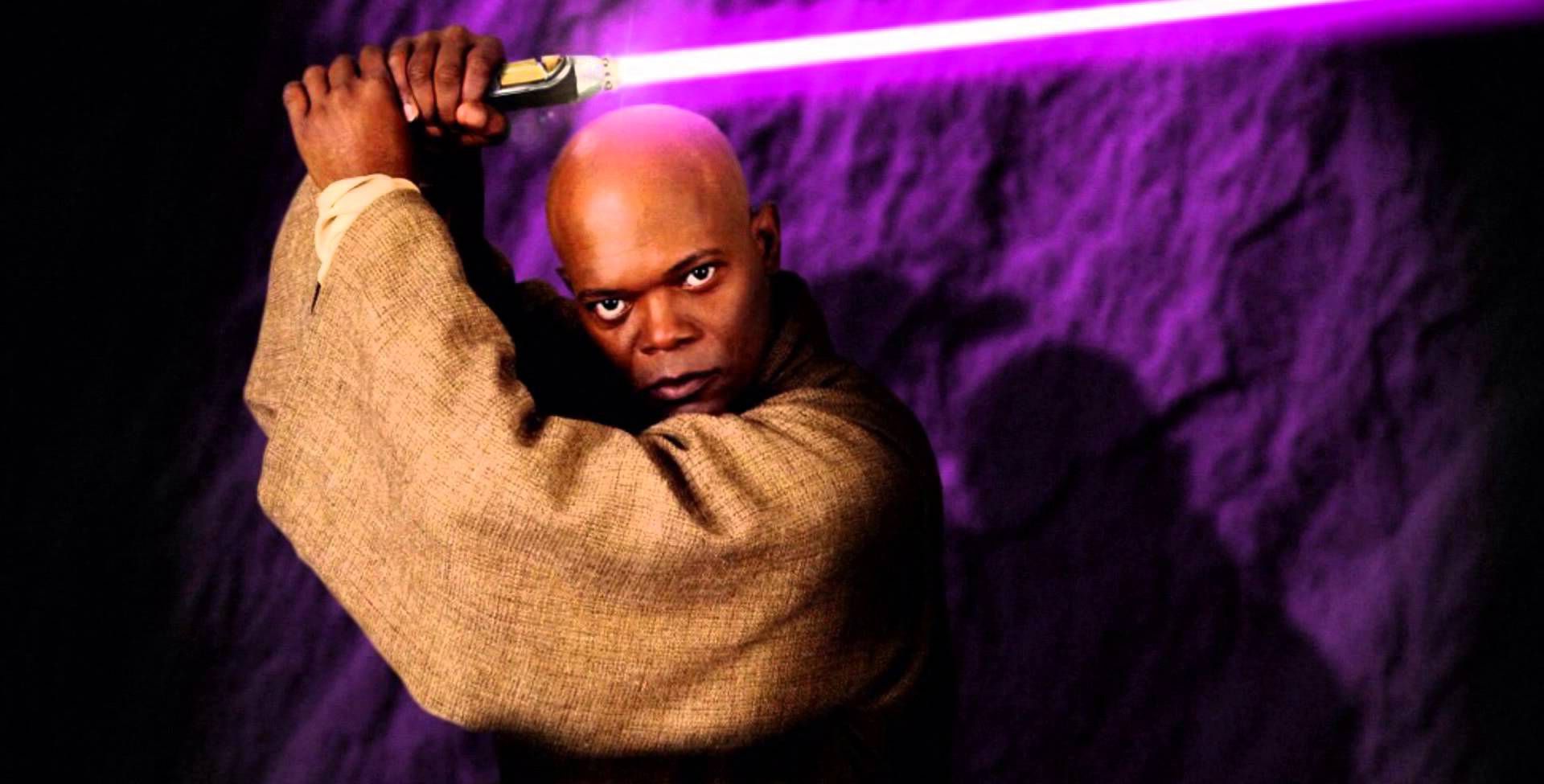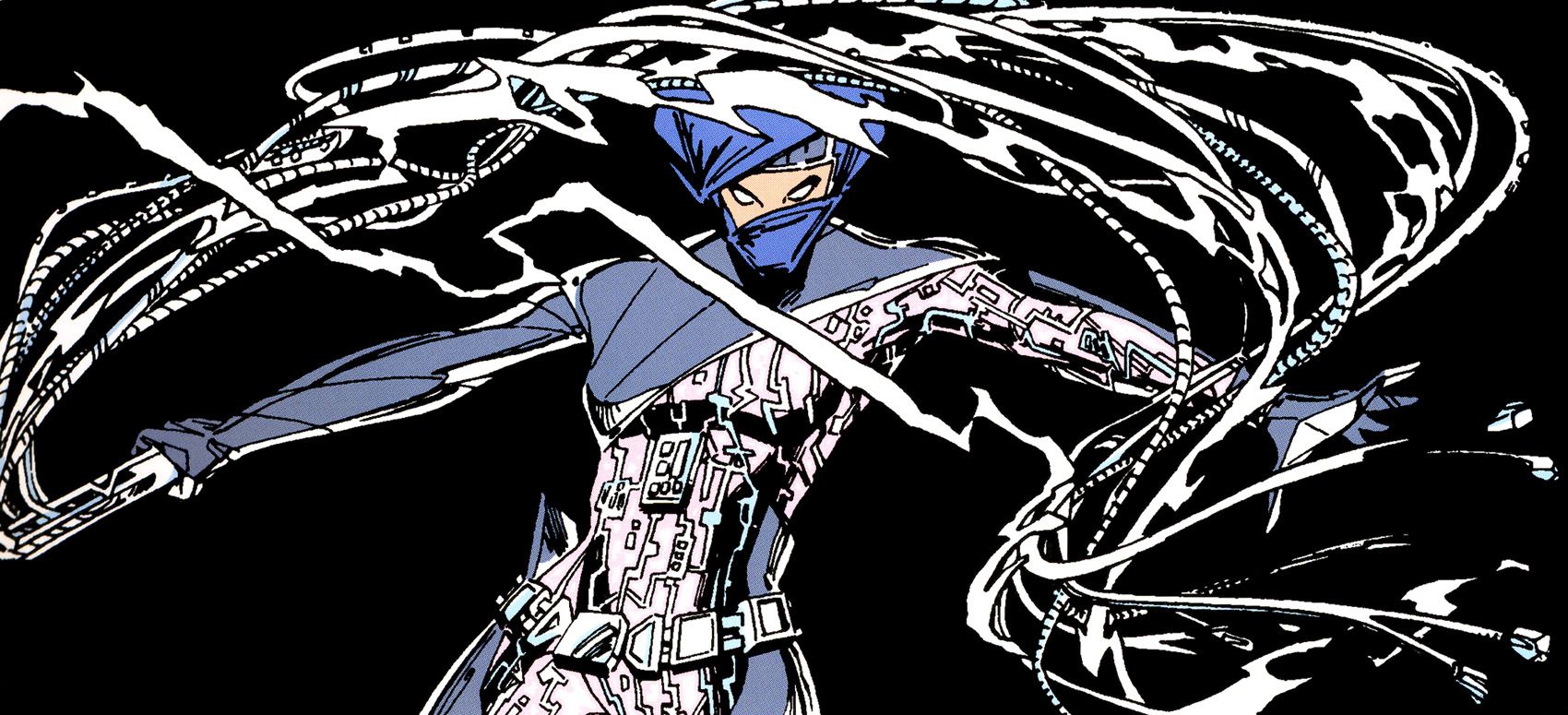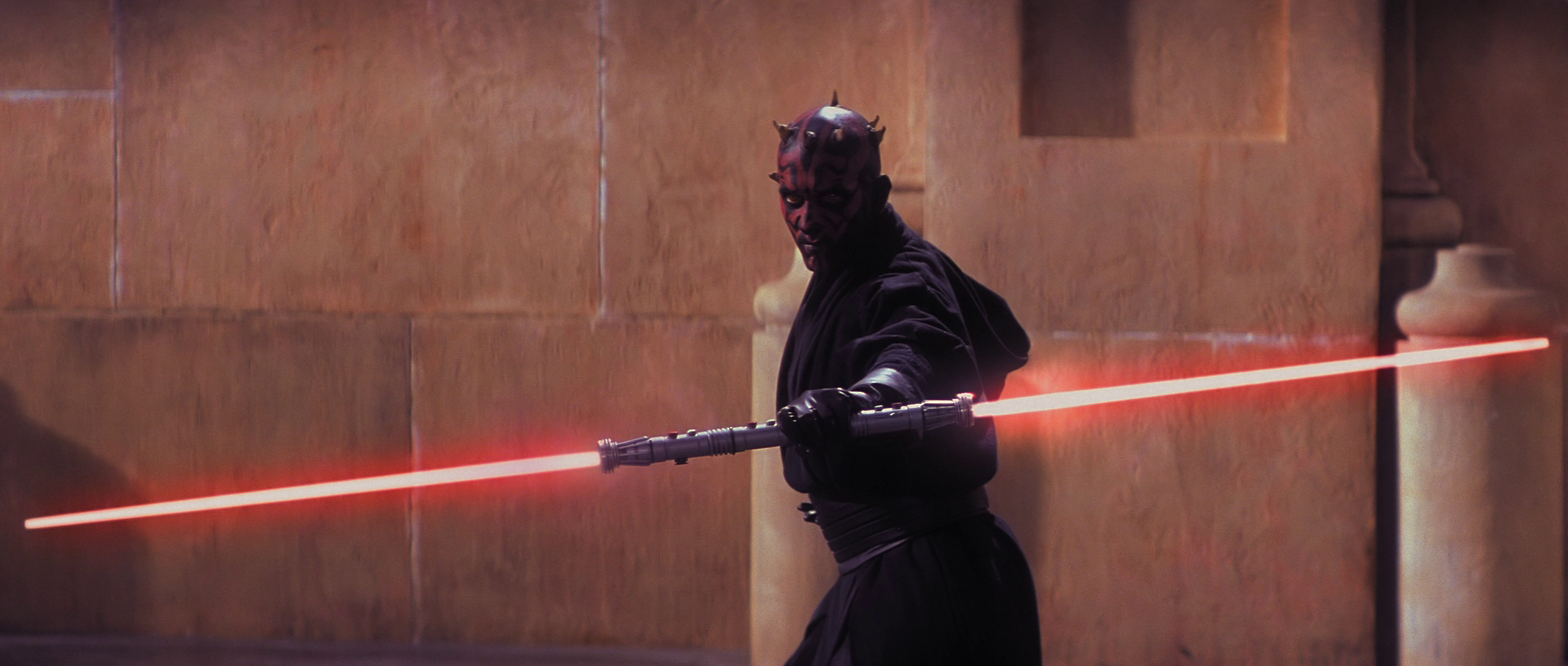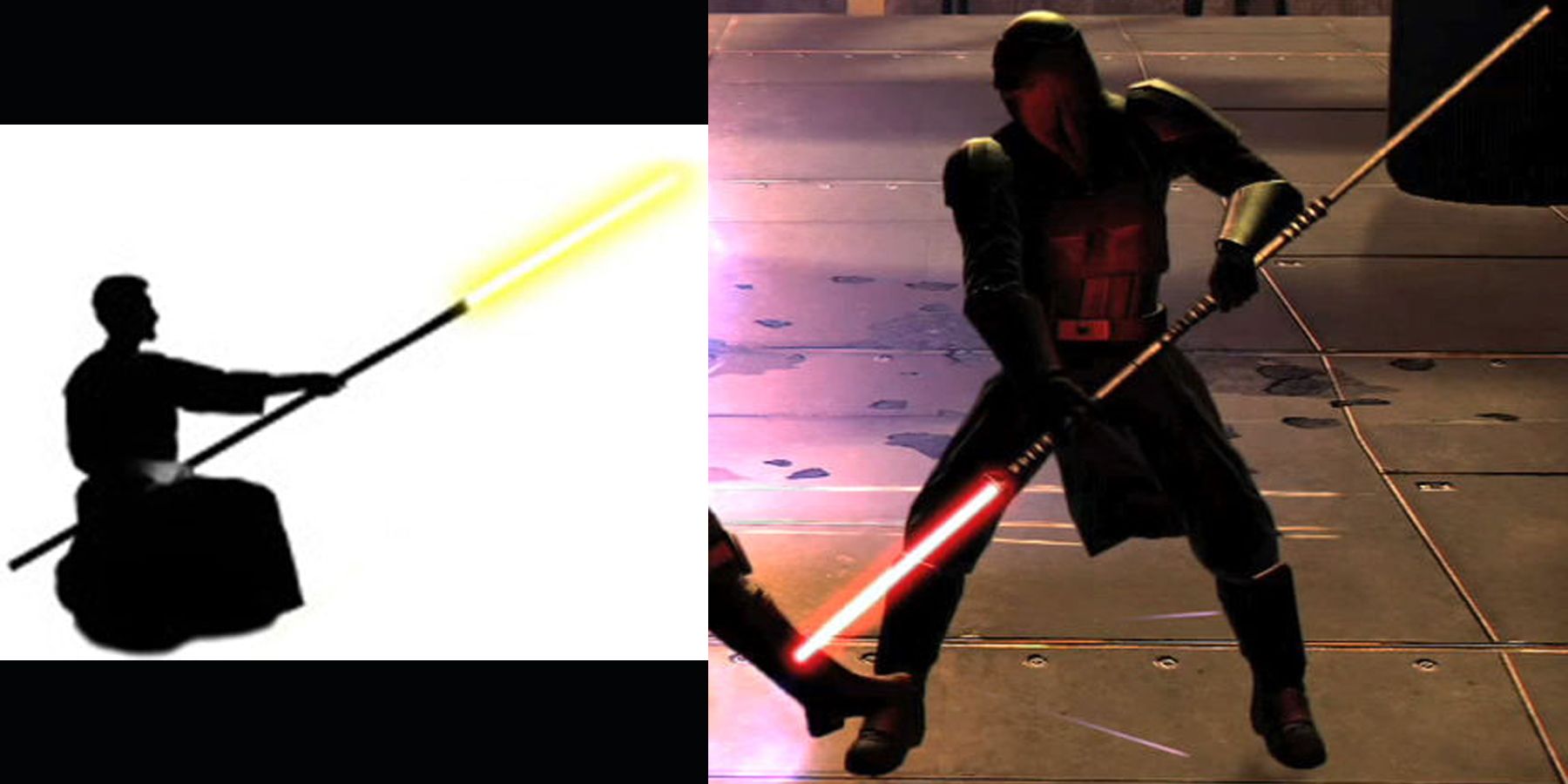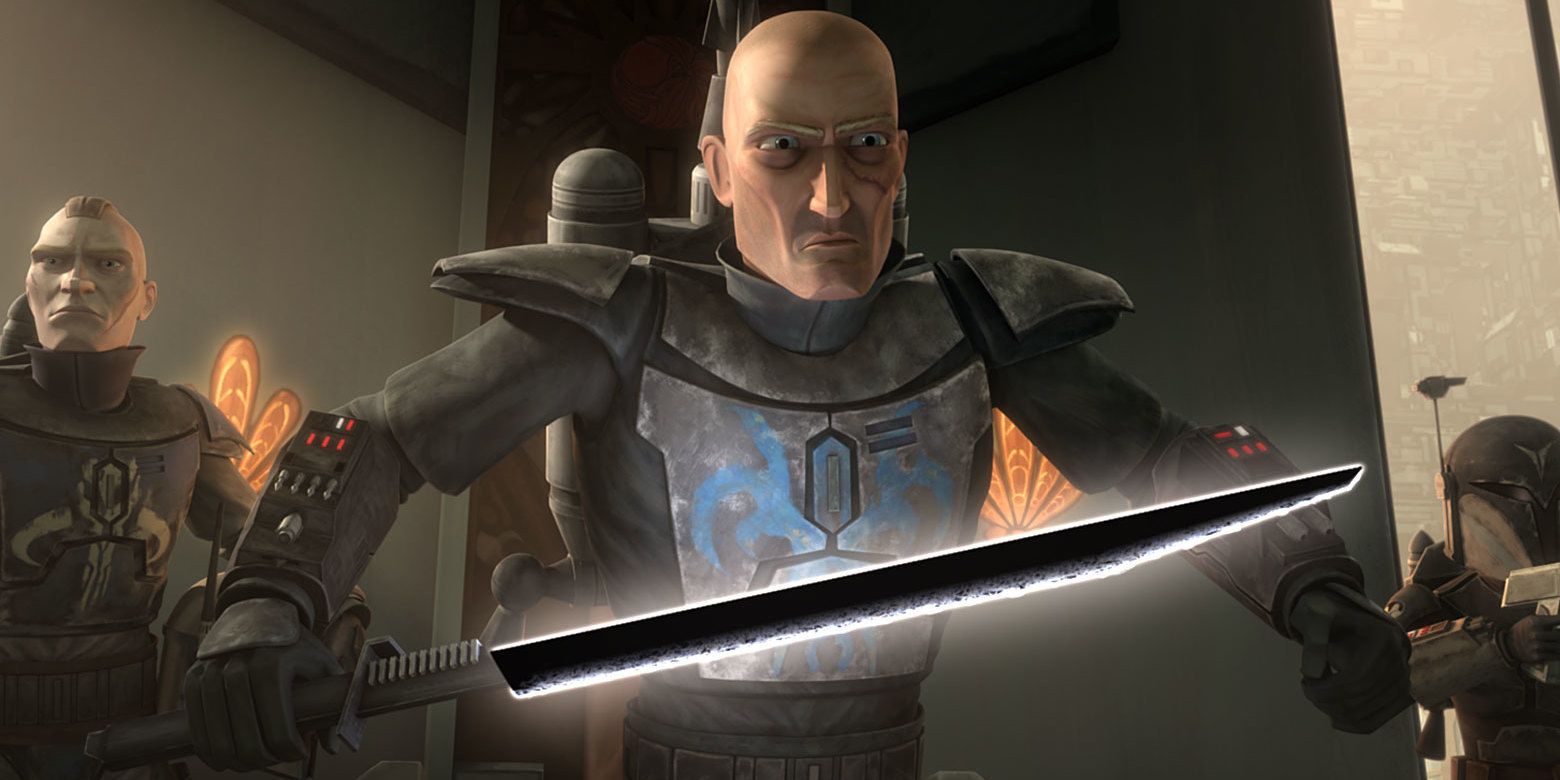There's a reason Obi-Wan Kenobi described the Lightsaber as "an elegant weapon, for a more civilized age." Lightsabers aren't just swords, they are an extension of the person who wields them and, in most cases, are forged during the pathway to becoming a Jedi or Sith. For a Jedi, they must go on a quest while still in training to find their Kyber Crystal and forge their weapon, while Sith must take theirs from a fallen foe and make them "bleed" with the Dark Side, turning the lightsaber its iconic crimson. Being primarily a melee weapon, a lightsaber requires close and intimate forms of combat, but their models differ greatly allowing for some unique fighting styles.
When Lightsabers were first introduced in Star Wars: Episode IV - A New Hope in 1977, the only variation was the color and style of hilt construction. Thanks to more than 40 years of comics, television series, webisodes, novels and the continuation of the film series, we now know that lightsabers are as varied a weapon as swords are here on Earth. Depending on the person who wields the blade -- or blades -- some have advantages over others. Ultimately, it's up to the wielder of the blade to determine how deadly it can become, given the right training. Here, though, are the 15 deadliest models in the galaxy far, far away.
15 STANDARD BLADE LIGHTSABER
The standard blade introduced first into the series as belonging to Anakin Skywalker is the most common model in the Star Wars Universe. In these configurations, the hilt ranges between 7.5" and 12" long (20-30 cm) and are most often crafted from metal. Some lightsaber hilts have been constructed from lightsaber-resistant materials, but these are rare.
The blade on a standard lightsaber is almost always blue or green for a Jedi while a Sith usually sports a red blade, which are crafted from fallen Jedi after their crystal's connection to the Light Side of the Force is broken. The blade itself typically extends to an average of three feet (91 cm), but this can vary somewhat depending on the configurations of the individual user. Standard Lightsabers are the easiest to construct and are crafted primarily for utilitarian purposes of attack and defense so they lack ornamentation.
14 TONFA-STYLE LIGHTSABER
Tonfa-Style or Guard Shoto Lightsabers were created primarily to block other lightsabers. Instead of a single hilt, a perpendicular second hilt is crafted alongside the middle part of the main hilt. This allows the bearer to hold lightsaber in a variety of ways. The shortened blade also enables the user to use their weapon in a number of offensive and defensive ways. In practical terms, the Tonfa-Style Lightsabers functioned similarly as a nightstick, but are much deadlier.
Because the Tonfa-Style lightsaber was designed primarily to block other blades, its hilt was often constructed with phrik, a metallic compound capable of stopping a lightsaber blade. This made them somewhat rare and expensive to create, but a bearer could block another attack with the entirety of their weapon. These Lightsabers could be used to jab, block, trap and slash making them versatile and deadly.
13 LONG-HANDLED LIGHTSABER
Long-Handles Lightsabers were designed to act as both a staff weapon and a long-handled sword. Using one of these elongated weapons allowed for the bearer to utilize a fighting style that employed their entire body. With a longer weapon, the wielder could swing it in large arcs by using their various joints as pivot points. Combating someone using one of these would require altering an attack strategy to compensate.
These weapons were employed by the Sith and Dark Jedi more than those who stood on the Light Side of the Force. Darth Chratis (pictured) used an especially long-handled Lightsaber during the Cold War to deadly effect. Many other Sith Lords featured this design when combating members of the Jedi order. The hilt of these weapons is often constructed of wood instead of metal to make them appear as simple staffs when the blade is not extended.
12 DUAL-PHASE LIGHTSABERS
The standard rule of thumb in Lightsaber construction is to use a single Kyber Crystal to focus the energy into a single blade. Clearly, there are some models on this list that don't follow that rule and the Dual-Phase Lightsaber is likely the most common. Dual-Phase Lightsabers utilize two Kyber Crystals within their hilts so they can be used in a number of interesting and surprising ways.
Depending on how the energy is focused, a Dual-Phase lightsaber can be used to instantly extend a blade to twice its normal length. Additionally, they can alternate between the crystals' energy to emit blades of different colors from the same hilt. Another feature allows for the blade's width to be adjusted into a wider and more powerful blade. The adjustments make the weapon especially effective in surprise attacks while already engaged in battle.
11 CURVED-HILT LIGHTSABERS
Nearly every type of Lightsaber has a standard, straight hilt, but there are some where the hilt is curved, as seen in Star Wars: Episode II - Attack of the Clones. Count Dooku's lightsaber is constructed in this manner and its design has been utilized by both the Sith and Jedi. Before the rise of the Empire, these Lightsabers, often called "Dueling Lighstabers," were common.
A curved hilt was both an ornamental design and a tactical one. Depending on the user's skills in fighting, they could be used for precision strikes with greater degrees of flexibility. The altered grip allowed for a wielder to change the angle of their attach much faster than someone who was holding a standard hilt, but there were some limitations as well. Constructing the hilt in this manner allowed for less room for the electronics and crystal, which made them difficult to construct and maintain.
10 CROSSGUARD LIGHTSABER
Many fans reeled when they first saw Kylo Ren's Crossguard Lightsaber in Star Wars: Episode VII - The Force Awakens. The unique design was an ancient creation from the time of the Great Scourge of Malachor. These Lightsabers are constructed with a single crystal and focusing crystal activators, which allowed for the additional beam's construction. The primary blade extends like any other Lightsaber, but the smaller blades are created via power vents called Quilons.
With these additional blades, the bearer has several advantages over someone wielding a more traditional Lightsaber. As demonstrated in the film, Kylo Ren was able to angle his weapon and inflict great harm on Finn as the two battled on Starkiller Base. Of course, there are disadvantages as well since Ren was similarly injured in the thigh with his own weapon. These require great skill and strength to use effectively.
9 PONG KRELL'S LIGHTSABERS
Jedi General Pong Krell fought during the Clone Wars with two unique double-bladed Lightsabers. Unlike other similar weapons, Pong Krell's were able to be folded in the middle, which allowed him to clip the blades to his utility belt. This made his double-bladed Lightsabers particularly versatile weapons compared to others. During the Clone Wars, double-bladed Lightsabers were considered rare and few could wield them, but Pong Krell was adept at carrying two.
Krell was able to activate the blades while they were still folded or extend them into a more natural configuration. Additionally, the blades were much larger than traditional ones and they emitted less sound when moved through the air. Krell was able to spin his blades with amazing precision and deadly accuracy, making his unique versions of a double-bladed Lightsaber both beautiful and deadly.
8 SPINNING LIGHTSABERS
There are several variations to the model, but a double-bladed spinning lightsaber was primarily used by the Imperial Inquisitors and the Grand Inquisitor himself. These weapons could be wielded in a number of different ways. When utilizing one blade in crescent mode, they acted as a standard Lightsaber, but in disc mode, they sported a second blade and could be spun rapidly without the need to physically spin the blades. This acted as an intimidation tactic, but also worked as an effective shield against attacks.
These weapons had a significant weakness, however, centered on their unique hilt. Because they were not constructed from a lightsaber-resistant material, they could be damaged, separated or destroyed in a fight. When the Grand Inquisitor faced Lord Vader, he was able to strike the weapon and slice it in half. These were better at intimidation than at fighting a skilled warrior.
7 UNDERWATER LIGHTSABERS
Lightsabers can cut through just about anything, but if you drop them in the toilet, they are going to short out. This makes underwater combat difficult, since a standard Lightsaber just won't cut it. Literally. You might think underwater combat wasn't a big deal, but we are talking about the expansive galaxy of the Star Wars Universe, so it does come up from time to time. Kit Fisto carried one of these during his battles on Mon Calamari.
In order to work properly underwater, a Lightsaber requires a modified bifurcating cyclical-ignition pulse, which is only achieved with two crystals. Underwater Lightsabers function similarly to Dual-Phase Lightsabers, but with a different modification unique to their construction. In Jedi vs. Sith: The Essential Guide to the Force, it was revealed that Anakin Skywalker's lightsaber carried by Luke and then Rey was modified in this way, though it is fairly uncommon.
6 SHOTO LIGHTSABERS
Not everyone can rock a three-foot long Lightsaber, which is why some of the more diminutive wielders carry shorter versions called Shoto Lightsabers. These smaller weapons are very common in the Star Wars Universe and are carried by a wide variety of people. The most notable user of a Shoto blade was Jedi Master Yoda, who brilliantly displayed his Lightsaber skills and weapon prowess against his former apprentice, Count Dooku.
Some wielders chose to wield a Shoto blade as their second weapon, sometimes employing two Shoto Lightsabers at the same time. The smaller blade allowed for a wide range of combatant techniques. Yoda proved that a shorter blade... and a shorter person... was in no way at a disadvantage against a capable Lightsaber opponent when he battled Count Dooku in Star Wars: Episode II - Attack of the Clones.
5 MACE WINDU'S PURPLE BLADED LIGHTSABER
Before Samuel L. Jackson came along, nobody had ever heard of a purple Lightsaber. He asked that it be included in the film due to his love of the color, but the nature of the weapon has been written into the lore to make it stand out as unique. While Jedi Master Mace Windu carried a standard blade with a common hilt, the color of the blade made it stand apart from his fellow members of the Jedi Council.
Because Lightsabers were originally blue for good guys and red for bad, a purple blade has been interpreted to mean a duality of light and dark. The blade is an extension of the user so it is believed that a purple blade suggests that the wielder, in this case Mace Windu, was able to feel anger, but still maintain his connection to the Light Side.
4 THE LIGHTWHIP
Lightwhips are pretty much exactly what they sound like. They are constructed in a manner similar to a Lightsaber, but instead of a single Kyber Crystal used to focus the energy into a single blade, they utilize numerous small crystals without any cell barriers in the plasma stream to keep the blade straight. The blade that was emitted would extend several meters and function exactly like a whip, only instead of woven leather, the whip was a Lightsaber blade.
Lightwhips were incredibly difficult to use and special training was required so that the user wasn't decapitated by flicking it--whips are hard to use, people! Because of its flexibility, these were also difficult to defend against. While most Lightwhips consisted of a single blade, some were crafted with multiple blades, which could even be emitted in a different array of colors.
3 DOUBLE-BLADED LIGHTSABERS
Before the pivotal scene in Star Wars: Episode I - The Phantom Menace when Darth Maul pulled out his weapon, the world had yet to see a double-bladed Lightsaber. These weapons' construction requires two lightsabers to be built against one another as you can see in the image above. Each could then emit a blade, which made them especially long and capable of fighting off multiple enemies at once. With one blade emitted, these weapons worked similarly to a long-handled Lightsaber, but with both, it was more of a quarterstaff.
As seen in the film, splitting the blade in half resulted in a still-functioning Lightsaber Darth Maul was able to use in his fight against Obi-Wan Kenobi and Jedi Master Qui-Gon Jinn. These weapons take a great deal of skill in training in utilizing properly against a trained opponent, but once mastered, they are considerably deadly.
2 QINATA LIGHTSABERS
The Qinata Lightsaber is not just a type of weapon, but also a specific fighting style developed in tandem with it. Qichani, meaning "Way of the Kell Dragon," was developed by Jedi Master Qidak Aaia to better suit his fighting styles. He parallels Bruce Lee in that both men went on to develop their own unique fighting style due to the inadequacies they saw in the traditional styles of their time. Qinata Lightsabers are similar to Long-Handled Lightsabers, but differ in the overall length of the hilt and blade.
Qichani fighting style has three basic elements: the weapon and style must be long-range, dual-wielding and martial arts. The Qinata can be duel-wielded when the lightsaber portion is removed from the main staff. The Qinata effectively works as a polearm, a Lightsaber and a staff weapon, depending on the configuration. Few have mastered these techniques, so Qinata are rare.
1 THE DARKSABER
Of all the Lightsabers listed here, the Darksaber is the only one that is truly unique. Purple Lightsabers have been seen in Legends, but only one Darksaber has ever been seen. The Darksaber was an ancient weapon crafted by Tarre Vizsla, a Jedi. The weapon was stored, stolen or handed down through the years from Jedi to Sith so it could be wielded by anyone capable of doing so, though it has fallen into the hands of the Sith with many Jedi falling to its blade over the years.
The hilt was rectangular in shape and the blade was emitted into a more traditional katana-like shape. The light emitted was black with a white electrical field surrounding it and it was capable of channeling the wielder's emotional state into the blade. The Darksaber was also able to draw in opposing Lightsaber blades and deflect them.

